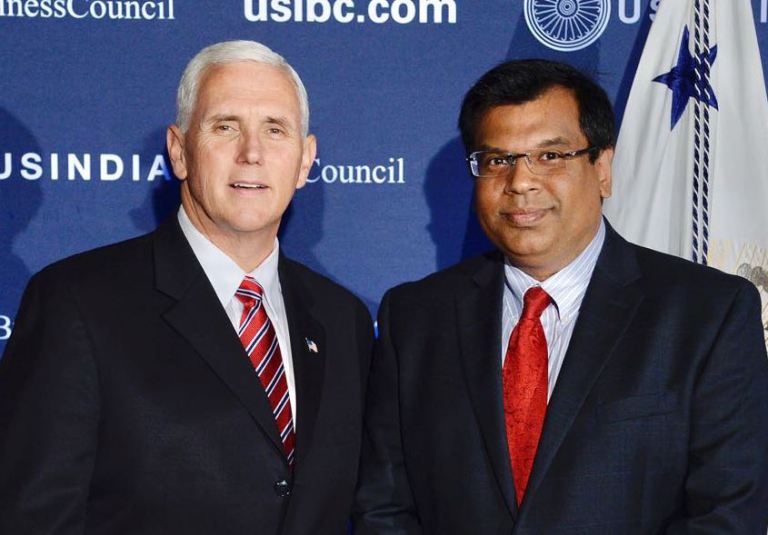
Washington–Distinguished aerospace expert Vivek Lall has joined Lockheed- Martin to look after the company’s combat jet program, specifically the newer generation F-16 Block 70 that the company has offered for production to India.
Lall took over his new assignment as Vice President, Strategy and Business Development, on on January 2 at the company’s aircraft production facility at Fort Worth, where the F-16 Falcon, F-35 Lightning II and other combat and transport aircraft like the F-22 Raptor and C-130J Super Hercules are made. The F-16 is on offer for indigenous production under New Delhi’s Make in India programme for single-engined fighters, some 300 to 400 could be made if it is selected.

A US citizen of Indian origin, Lall has successfully worked with NASA, Raytheon, Boeing and General Atomics, and is well regarded in India, Southeast Asia and the Gulf regions, where he has been frequenting to sell military ware to nuclear safety devices and materials as per US government laws. Nearly all the weapon systems in the US are made by private companies but most critical items can be sold only with the permission of the US Departments of Defense and State.
Asked to comment on his assignment, Lall observed that Lockheed-Martin is the world’s biggest defence company, nearly all the futuristic military aircraft are made by it, the F-16 has been produced in the largest possible numbers in the world and has logged the highest number of flying hours, and is a robust platform now being evolved into Block 70 configuration with plans for further development into Block 80.
If the Indian Air Force (IAF) selects it, the Block 70 production facility will move to India and is where the aircraft’s evolution into Block 80 would take place in collaboration with the Indian industry, Lall told India Strategic.

Although the first F-16 was inducted into the US Air Force (USAF) in 1980, there have been periodic upgrades. The UAE Air Force (UAEAF) inducted the first Block 60 with Active Electronically Scanned Array (AESA) radar in 2004, and now Bahrain has purchased 16 Block 70 aircraft for $3.8 billon with an option for three more. The aircraft come with weapons and maintenance support.
If India selects the F-16, it would be the same Block 70 but IAF might add some of its own requirements for compatibility with its other aircraft, radars and ground systems. That for instance, has been done in the case of 36 Rafales that IAF is acquiring from France.
The RFI was actually expected around October but now, it is stated to be due in about 3-4 months, possibly in or around April.
The IAF requires both single and twin engine aircraft. In the single engine category, the RFI is to be issued to the Lockheed-Martin and Sweden’s Saab. For the twin-engine requirements, the Boeing F-18 Advanced Super Hornet Block III and French Dassault’s Rafale are in the competition, both for IAF and the Indian Navy.
Notably, Lockheed-Martin already has an agreement with Tata Advanced Systems Ltd. (TASL) for making the aircraft in India and the process to select vendors for sub-assemblies has already started, something that all big companies do well before they win a contract.
As of today, IAF has 32 combat squadrons against the sanctioned 42, and it is losing two squadrons every year due to obsolescence. Except for the Sukhoi Su-30 MKI, all the IAF combat aircraft are of the Soviet or 1980s vintage and IAF has literally been roaring for jet speed in the acquisition of Medium Multi Role Combat Aircraft (MMRCAs) as well as some Fifth Generation Fighters.
The IAF has already ordered 123 Tejas indigenous Light Combat Aircraft (LCA) but these are light jets for missions around the borders. For deep strikes, IAF needs heavier, powerful aircraft. (IANS)






